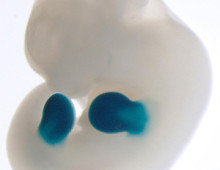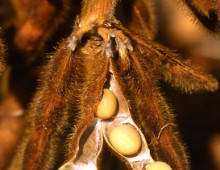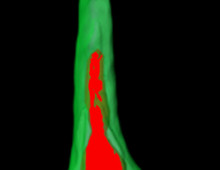Scientists have decoded genomes of two strains of green algae, highlighting genes that allow them to capture carbon emissions and maintain the oceans’ chemical balance, a study said on Thursday. The strains’ productivity as a significant source of marine food and their ability to capture carbon means the algae can influence the carbon flux and…
Genes from tiny marine algae opens new avenues of research
By sequencing the DNA of two tiny marine algae, a team of scientists has opened up a myriad of possibilities for new research in algal physiology, plant biology, and marine ecology. The project was led by Alexandra Worden at the Monterey Bay Aquarium Research Institute (MBARI) and the Joint Genome Institute (JGI). The genome analyses…
UI biologist studies ocean plant cell adaptation in climate change
How will plant cells that live in the oceans and serve as the basic food supply for many of the world’s sea creatures react to climate change? A University of Iowa biologist and faculty member in the Roy J. Carver Center for Comparative Genomics and his colleagues came one step closer to answering that question…
Unraveling the Mysteries in Sorghum’s ‘Simple’ Genome
Mapping out a genetic blueprint involves determining several short sections that would make up a gene, and sequencing those in bulk. Then, scientists take all of those pieces and put them together like a puzzle—a difficult puzzle, according to Dan Rokhsar, the computational biology leader at the U.S. DOE Joint Genome Institute in Walnut Creek,…
Genes from Tiny Algae Shed Light on Big Role Managing Carbon in World’s Oceans & Coping with Environmental Change
WALNUT CREEK, CA—Scientists from two-dozen research organizations led by the U.S. Department of Energy (DOE) Joint Genome Institute (JGI) and the Monterey Bay Aquarium Research Institute (MBARI) have decoded genomes of two algal strains, highlighting the genes enabling them to capture carbon and maintain its delicate balance in the oceans. These findings, from a team…
Next Gen Sequencing Technology Pinpoint “On-Off Switches” in Genomes
WALNUT CREEK, CA—Scientists from the U.S. Department of Energy (DOE) Joint Genome Institute (JGI), Lawrence Berkeley National Laboratory, and the University of California, San Diego have developed a set of molecular tools that provide important insight into the complex genomes of multicellular organisms. The strategy promises to clarify the longstanding mystery of the role played…
Rot’s Unique Wood Degrading Machinery to be Harnessed for Better Biofuels Production
WALNUT CREEK, CA—An international team led by scientists from the U.S. Department of Energy (DOE) Joint Genome Institute (JGI) and the U.S. Department of Agriculture Forest Service, Forest Products Laboratory (FPL) have translated the genetic code that explains the complex biochemical machinery making brown-rot fungi uniquely destructive to wood. The same processes that provide easier…
Scientists Publish Complete Genetic Blueprint of Key Biofuels Crop
WALNUT CREEK, CA—Scientists at the U.S. Department of Energy (DOE) Joint Genome Institute (JGI) and several partner institutions have published the sequence and analysis of the complete genome of sorghum, a major food and fodder plant with high potential as a bioenergy crop. The genome data will aid scientists in optimizing sorghum and other crops…
DOE Joint Genome Institute Completes Soybean Genome— Data Released to Advance Biofuel, Food, & Feed Research
WALNUT CREEK, CA— The U.S. Department of Energy Joint Genome Institute (DOE JGI) has released a complete draft assembly of the soybean (Glycine max) genetic code, making it widely available to the research community to advance new breeding strategies for one of the world’s most valuable plant commodities. Soybean not only accounts for 70 percent…
Diatom Genome Helps Explain Their Great Diversity and Success in Trapping Excess Carbon in Oceans
WALNUT CREEK, CA—Diatoms, mighty microscopic algae, have profound influence on climate, producing 20 percent of the oxygen we breathe by capturing atmospheric carbon and in so doing, countering the greenhouse effect. Since their evolutionary origins these photosynthetic wonders have come to acquire advantageous genes from bacterial, animal and plant ancestors enabling them to thrive in…





